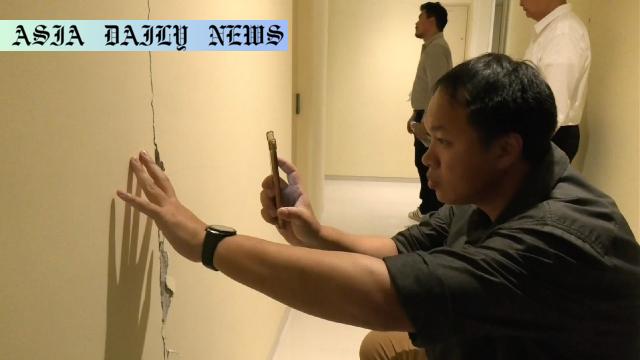Earthquake: Officials in Bangkok are inspecting over 10,000 reported damaged buildings after a major quake rocked the area last Friday.

Bangkok Reels from the Aftershock of a Destructive Earthquake
Bangkok officials have initiated inspections of over 10,000 reported damaged structures in light of a devastating earthquake that shook the region last Friday. The crisis has left the city’s residents anxious about their safety, especially with incidents like a skyscraper collapsing during the quake. The urgent inspection process has become a top priority to ensure public safety and restore calm amidst the frenetic environment.
Inspecting Vulnerable Residential Areas
On Tuesday, Bangkok Metropolitan Administration (BMA) teams evaluated a 41-story apartment housing 900 residents. Cracks in walls and hallways with fallen ceilings highlighted structural vulnerabilities, leaving occupants deeply worried about their living conditions. A local resident expressed her unease, stating, “I don’t want to stay here anymore if another quake hits.” This sentiment encapsulates the widespread anxiety among city dwellers. BMA officials emphasized the urgency of completing inspections promptly to address these pressing concerns.
Seeking Aid and Expertise from Japan
The aftermath of the earthquake has also prompted significant government action on the international front. Thai Deputy Prime Minister Anutin Charnvirakul formally approached Japanese Ambassador Otaka Masato for assistance. Highlighting Japan’s expertise in earthquake response and building resilience, the Thai government has sought both disaster investigation experts and advanced knowledge regarding warning systems. This collaboration underscores the extent of Thailand’s commitment to building a stronger infrastructure for future calamities.
A City in Recovery and Preparedness
As Bangkok recovers from the recent seismic activity, the ongoing efforts to inspect damages and work towards preventative measures reflect a dual strategy of immediate crisis management and long-term improvement. Residents, while visibly shaken, may find hope in the administration’s proactive response and the potential for international collaboration to improve disaster preparedness systems. However, this period poses significant challenges as officials contend with the dual pressure of addressing public fears and systemically repairing the infrastructure.
Commentary
Urgency in the Face of Natural Disasters
The recent earthquake in Bangkok highlights the vulnerability of metropolitan cities, especially in regions not accustomed to large-scale seismic activities. The sheer number of damaged structures reported—over 10,000—serves as a wake-up call not just for Thailand but for urban centers globally. Such events underline the critical need for robust infrastructure and disaster response strategies. In the case of Bangkok, the incident has understandably instilled fear and anxiety among residents, which officials must address swiftly and thoroughly.
The Role of International Collaboration
One noteworthy aspect of the Thai government’s response is its proactive engagement with Japan, a country renowned for its advanced earthquake-resistant architecture and disaster response systems. By seeking Japan’s expertise, Thailand sets a commendable example of leveraging global knowledge for local challenges. This collaboration gives impetus to the idea that disaster management is not a solitary effort but often requires the collective wisdom of international experience, policies, and innovations.
The Need for Long-Term Structural Resilience
While immediate inspections and safety assurances are critical, Bangkok’s earthquake presents a long-term challenge: can the city’s infrastructure be upgraded to withstand future disasters? Urban planners worldwide must grapple with the growing unpredictability of natural disasters due to climate change and geological shifts. The focus must shift from reactive measures to preventive strategies, such as earthquake-resistant buildings, robust warning systems, and community education programs.
Promoting Awareness and Preparedness
This event further underscores the importance of cultivating disaster awareness at a grassroots level. Building inspection standards, evacuation drills, and public education campaigns must become routine in regions vulnerable to seismic activity. Only through ongoing public-private cooperation and community engagement can we build a safer, more resilient society. Bangkok’s response serves as a critical case study for nations looking to enhance their disaster readiness proactively.


